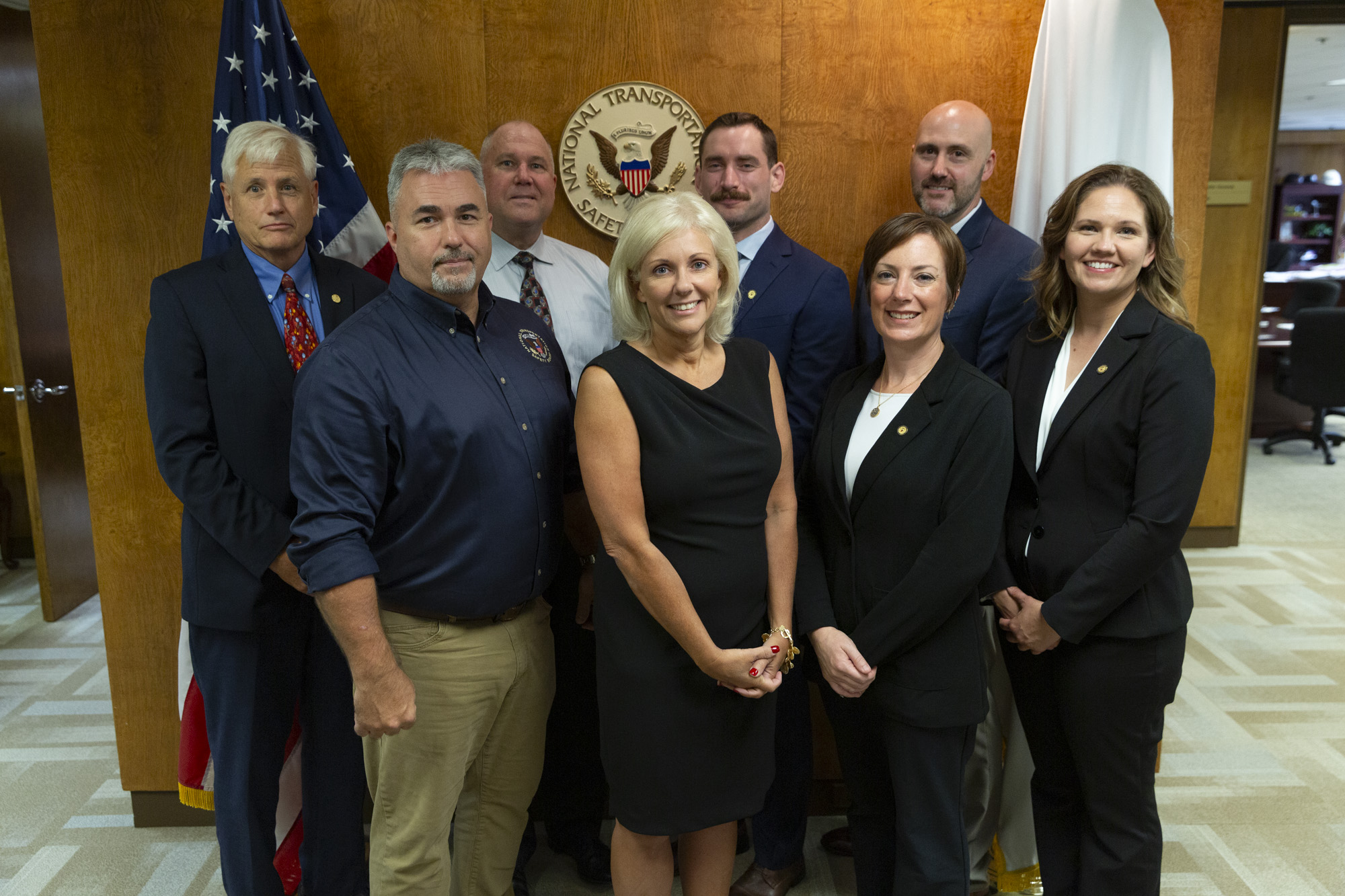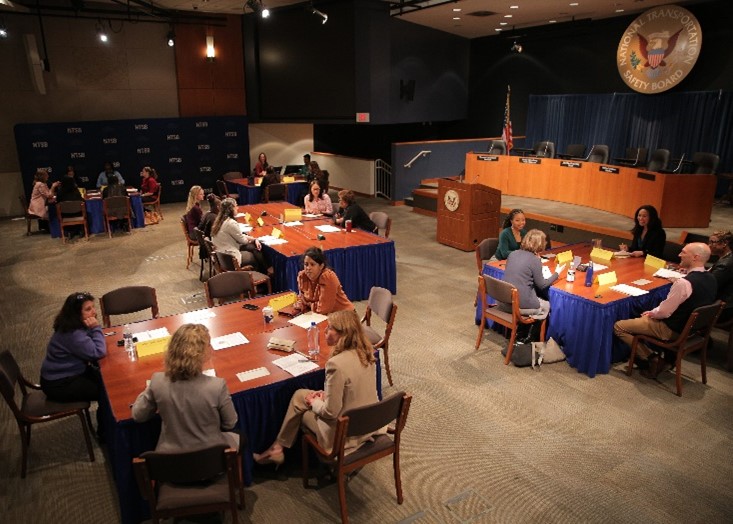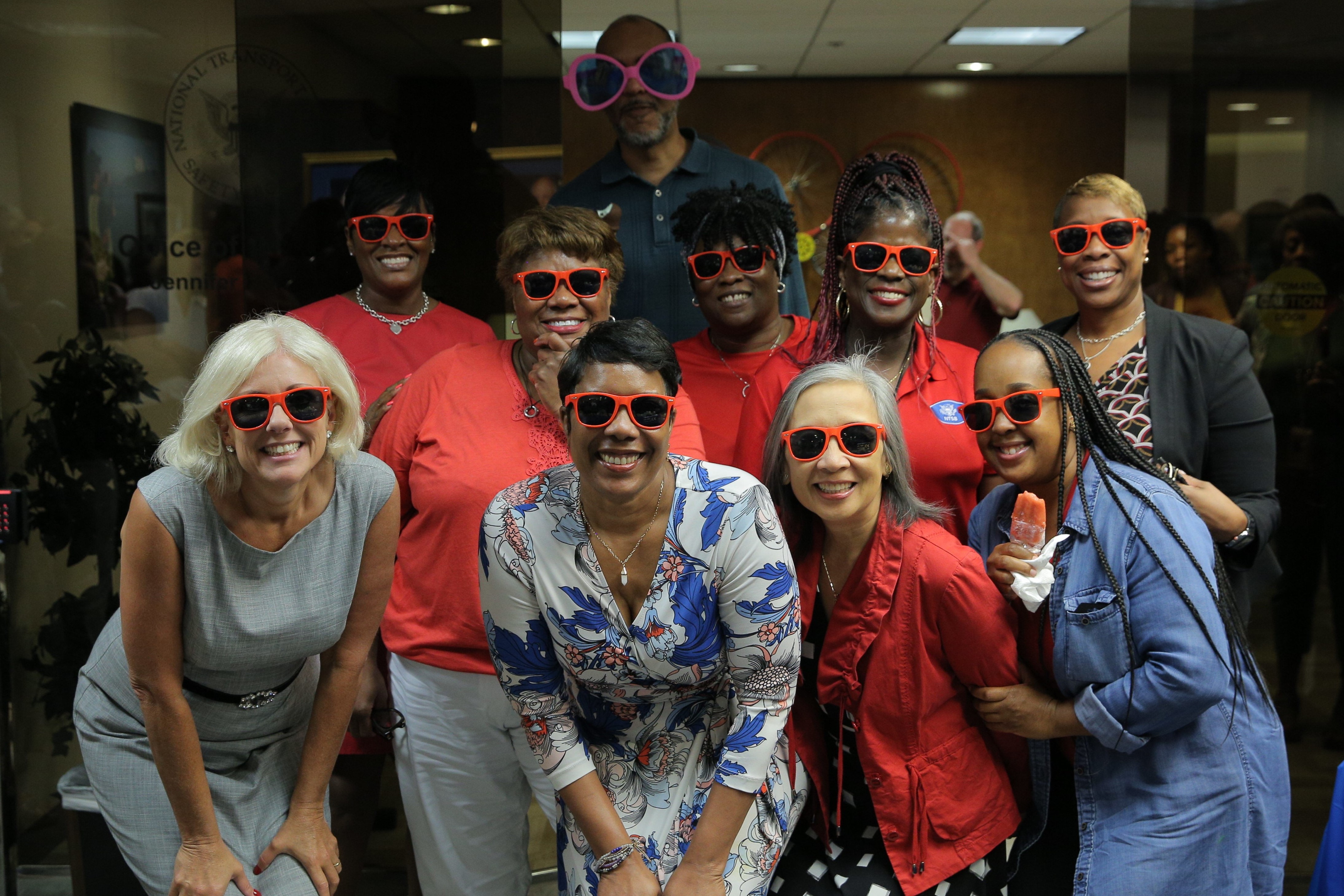By Dana Schulze, NTSB Managing Director
The National Transportation Safety Board (NTSB) is an independent federal agency charged by Congress with investigating every civil aviation accident in the United States and significant events in railroad, transit, highway, marine, pipeline, and commercial space. We determine the probable causes of the accidents and events we investigate and issue safety recommendations aimed at preventing future occurrences.
The agency’s investigative and technical staff are recognized for their forensic safety expertise, and with support from the agency’s professional staff, the NTSB is the premier safety investigation organization in the world. In total, the NTSB has conducted more than 153,000 aviation-related investigations and thousands of highway, transit, marine, rail, pipeline, and commercial space investigations, resulting in more than 15,300 safety recommendations. As a result, the NTSB has had a significant and far-reaching impact improving transportation safety for all, with 80% of our recommendations being addressed.
We’ve been getting the job done, even though our budget and workforce has remained relatively flat for the past 20 years. That’s until the 15th Chair of the NTSB, Jennifer Homendy, was sworn in on Aug. 15, 2021.
From her first day, Chair Homendy immediately began implementing her vision of putting mission first, building our agency’s staffing and infrastructure to equip us to better meet the transportation safety challenges we face, including today’s accidents and significant events and those coming in the very near future from emerging technologies like autonomous vehicles and commercial space.
Growing our Workforce
Her first step: fund the agency to grow our workforce. Chair Homendy understood that the agency could not effectively operate with the same number of people that we had in 1997, given the growing complexities of the transportation systems we investigate. Working with leadership across the agency, the Chair secured needed funding increases in fiscal years (FYs) 2022 and 2023, prioritizing recruitment of a diverse and talented workforce, starting with hiring the agency’s first chief human capital officer and supporting a hiring surge.
Under Homendy’s leadership, our workforce has rebounded from an all-time low of 397 employees in August 2019 to its current 419 dedicated professionals. The NTSB workforce is expected to grow to 435 employees by the end of September.

Chair Homendy routinely swears in new staff as they are welcomed into the agency by our senior leaders. Just this week, the Chair gave the oath of office to a returning NTSB employee joining our Office of Research and Engineering and new members of the Air Traffic Control Team within the Office of Aviation Safety. That division is now fully staffed for the first time in 7 years.
We also have Chair Homendy to thank for successfully asking the Office of Personnel Management to grant us direct-hire authority, which has sped up the hiring process and enabled us to identify and hire the right talent, for the right job, faster.
Getting Up to Speed Quickly
With so many new hires, agency leaders are focused on ensuring all staff have the skills to succeed. Staff now have access to a Career Development Roadmap with a curated list of educational resources in emerging technology, leadership, project management, data analytics, and many other areas critical to our mission success. We’ve developed and launched a multimodal drone program, including new drones and training for drone operators.
We even launched a new mentoring program in 2023 to connect our seasoned veterans with our newest members to help transfer their knowledge, skills, and expertise. We kicked the program off with a speed mentoring event featuring female leaders across the agency during Women’s History Month.

We’re also investing in our infrastructure, prioritizing funding to acquire long-overdue enhanced IT tools and digital capabilities to improve the customer experience of both staff and those seeking information from the NTSB. This will be supported by the $16.2 million Technology Modernization Fund loan recently awarded to our agency, thanks to an agencywide team led by the Office of Chief Information Officer (CIO) in coordination with the Office of Managing Director, the Office of the Chief Financial Officer, and the Office of Human Capital Management and Training.


If you’ve met Jennifer Homendy, you know she’s a people person. She’s always out there building relationships in big and small ways, internally and with external stakeholders. Our recent ice cream social, co-hosted by the agency’s staff-led Diversity and Inclusion Council (“the DIAC”) and my office, is one example of the Chair’s efforts. The social was a great opportunity to break down our organizational silos, help our new staff feel welcome, and assure everyone that we’re all focused on the same core mission, no matter what your role, as part of Team NTSB.
Driving Change with Data
Ensuring our agency leaders have the data they need to make critical decisions, improve our operations, and swiftly answer data calls from Congress and the public has been a top priority for Chair Homendy.
As a result, the NTSB now has a formal Data Program and Data Strategy Plan. We’ve also hired a chief data officer, who will join our agency in early FY 2024. Already, with the help of our chief data scientist and CIO, our data infrastructure has grown to allow staff use dashboards and data visualization tools to help analyze the agency’s work, identify trouble spots and bottlenecks, and make changes to improve efficiency.
The proof of success from our data-driven change and larger workforce is in the numbers. Over the past 2 years, thanks to staff’s incredible work, we’ve reduced our backlog of 442 incomplete investigations over 2 years old to almost zero, and the average time to complete an investigation has decreased across every mode of transportation we investigate. Now, that’s measurable progress!
Rightsizing our Budget
Growth and operational improvements come at a cost—a fact not lost on Chair Homendy. For the past 2 years, the Chair has been on Capitol Hill knocking on doors and speaking to everyone who will listen about why our agency’s budget needs to be rightsized.
She has also spent the past 2 years proving to Congress that this agency is responsive and nimble, and that we’re improving our operational efficiency. All her efforts to grow our staff, reduce our investigation backlog, and better serve and represent our customers are paying off.
For FY 2024, the House Appropriations Committee approved a $145-million budget for our agency. If granted, it would be the first significant NTSB funding increase since the mid-1990s. The new funding has long been needed to continue to grow the agency’s size and capabilities so we can more effectively accomplish our critical safety mission.
We look forward to entering the new fiscal year energized, better staffed, and prepared to meet new challenges, with a new group of NTSB employees ready to join in our critical mission to make transportation safer for all.







